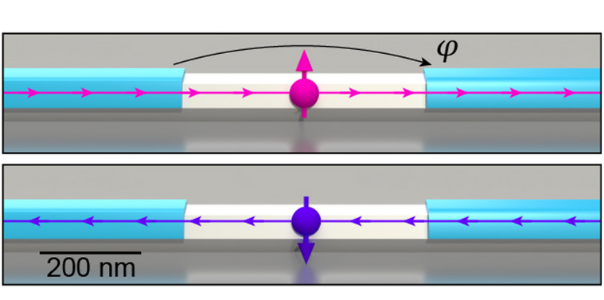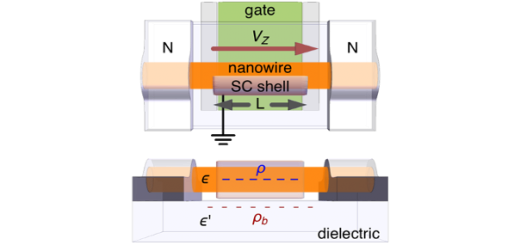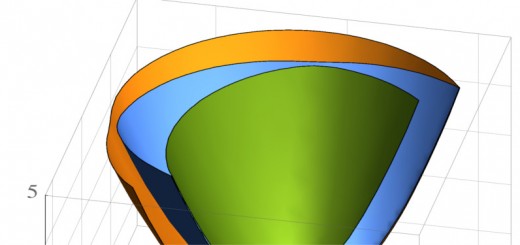Development of Superconducting Spin Qubits
Article: Published in Science.
An international team, with the participation of the Department of Theoretical Condensed Metter Physics researchers, demonstrates the viability of a new type of qubit based on the spin of electrons trapped in a superconducting wire. The results, published in the journal Science, are an important advance in the field of quantum computing.
Principle of the superconducting spin qubit. A quasiparticle trapped in a Josephson junction formed by a semiconductor nanowire (white) coated by a superconductor (light blue). Due to the spin-orbit interaction, the supercurrent is sensitive to the spin of the quasiparticle, which allows its detection and coherent manipulation by techniques commonly used in conventional superconducting qubits.
Quantum computers have the potential to overcome all current computing paradigms. The work published in Science last July, presents a promising implementation for the storage and manipulation of quantum information.
This implementation corresponds to the fusion of two already known platforms: on the one hand, the one based on electromagnetic modes in superconducting circuits and, on the other, the one based on the spin of electrons trapped in semiconductor quantum dots. This new implementation has the potential to inherit the beneficial aspects of both platforms.
The qubit consists of the spin of a single superconducting quasiparticle, which corresponds to a coherent superposition of electrons and holes, trapped in a Josephson junction formed in a semiconductor nanowire. Due to the spin-orbit interaction, the supercurrent that flows through the nanowire depends on the spin state of the quasiparticle. This work demonstrates how it is possible to take advantage of the spin-dependent supercurrent to perform both detection and coherent spin manipulation.
Unique properties for quantum storage
This work also represents a significant advance in the theoretical understanding and possible control of the so-called Andreev levels. These levels are fermionic modes that exist in all superconducting junctions and that allow us to explain the microscopic origin of the famous Josephson effect.
In superconductor-semiconductor heterostructures, such as the junctions formed by nanowires studied in this work, Andreev levels are precursors of so-called Majorana states, which have unique properties for storing quantum information in a decoherence-resistant form. This experiment, therefore, is also important concerning the development of devices based on these types of states.
The work was carried out by an international team led by Yale University, in which, in addition to the UAM researchers, the universities of Copenhagen, Cartagena and Chalmers participate. [Full article].




















